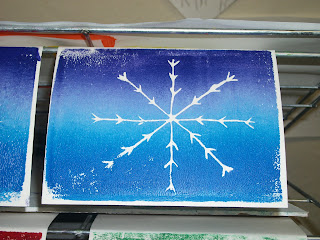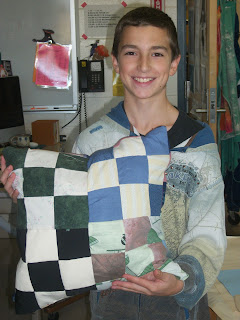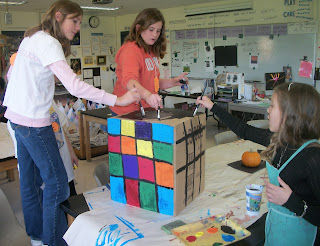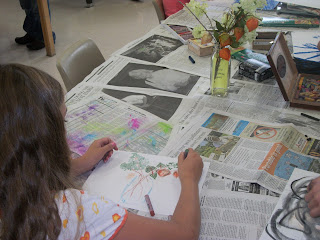Art teachers have a long tradition of, well, let’s face it, looking down their noses at the drawing of stick figures – “how about adding some feet” we suggest, trying to be helpful. Or, “do you think you might want to put some clothes on that guy?”
By "C" Grade 7
When art teachers transition away from assigned drawing exercises and allow students to choose their own subject matter and to develop their own style, stick figures often populate the resulting artwork. Boys, in particular, employ stick figures when creating action scenes. Like so many ants, these stick-guys can appear all over the place doing all kinds of funny, brave, dangerous, adventuresome or foolhardy things.
In a recent online discussion among art educators, a middle school teacher from Massachusetts noted:
“ I have observed that stick figures are a useful symbol. Most… kid
art is very narrative. The important bit is the story, the drawing is just the forum for that story. This is why (I believe) boys will be perfectly capable of drawing intricate tanks and planes in a battle scene but the people are stick figures, they are there to tell the story, but not the most important part, they have no names or faces.” - post #23077, TAB Yahoo group http://groups.yahoo.com/group/TAB-ChoiceArtEd/
By "C" Grade 7
I observed a particularly expressive stick-figure-artist transition from two-dimensional stick figure depiction to a three-dimensional, sculptural interpretation of stick action figures using – sticks! Craft sticks are readily available in our studio-classroom. “C” started with these but then embellished with other found objects, aluminum foil, colored masking tape and minimal use of paint for emphasis. It is remarkable to me how “C’s” style and skill conveying action, story and expression carries through from the original drawings to his collection of sculptures. His color palette is consistent in both, as is the strong sense of movement. This young artist is developing a strong individual style.
















































